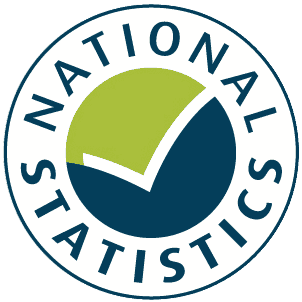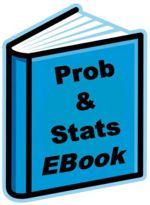Counting Happiness and Where it Comes From
Posted by Armando Brito Mendes | Filed under Data Science, visualização
Um excelente exemplo de gráfico de bolhas ligadas
Researchers asked 10,000 participants to list ten things that recently made them happy. The result was HappyDB, a collection of 100,000 happy moments. For each moment, I parsed out the subject, verb, and object to better see what makes people happy overall.
For example, someone might have said “I watched a good movie yesterday.” The subject was “I”, the verb was “watched”, and the object was “movie”.
Then I counted and connected the dots.
Tags: bolhas, gráficos, happiness
Noah Kalina’s averaged face over 7,777 days
Posted by Armando Brito Mendes | Filed under Data Science, videos
um vídeo obtido de 7 777 fotos em dias seguidos, com sobreposição usando machine learning (não é o gif da imagem)
Noah Kalina has been taking a picture of himself every day since January 11, 2000. He posted time-lapse videos in 2007, 2012, and 2020. Last year was the 20th of the project.
Usually Kalina’s videos are a straight up time-lapse using every photo. But in this collaboration with Michael Notter, 7,777 Days shows a smoother passage of time. Notter used machine learning to align the face pictures, and then each frame shows a 60-day average, which focuses on an aging face instead of everything else in the background. Tags:average, face, machine learning, Michael Notter, Noah Kalina
Vaccination burnout?
Posted by Armando Brito Mendes | Filed under Data Science, relatórios, visualização

Muito bom relatório com gráficos originais e alguns interativos sobre a evolução da vacinação COVID-19
The pace of COVID-19 vaccinations is increasing in a handful of spots around the globe as the more contagious Delta variant spreads and governments expand their efforts to try to reach more people.
In Israel the vaccination rate had plateaued in April as new COVID infections were on a months-long steady decline. But when the arrival of Delta brought a spike of cases in June, the government jumped in quickly with a new campaign urging teenagers to get the shot and parents to vaccinate their children aged 12 to 15.
Tags: COVID, difference charts, gráficos
A Pirate’s Favorite Programming Language
Posted by Armando Brito Mendes | Filed under Data Science, estatística
O curioso e divertido ponto de vista de um programador sobre a linguagem R e outras linguages especializadas.
I’d like to understand more about the world of statistics and data science, so I’ve been learning the programming language R. It has wide applications in the sciences (social and natural). There’s an IDE, freely available, called R Studio, which features a very large number of relatively sensible defaults and makes it easy to load up libraries. This meant that I didn’t have to learn much to get started, and had all the software I needed installed and ready to go in a few minutes. There’s also a set of connected libraries called the tidyverse that are obviously a huge improvement on whatever was there before.
Tags: diversão, linguagens de programação, tempos livres
UEFA 2020 chart gallery
Posted by Armando Brito Mendes | Filed under Data Science, infogramas \ dashboards, visualização

Uma foram curiosa, usando triângulos (centrais para o resultado e laterais para os penaltis) de visualizar os resultados do europeu.
these charts were inspired by Basketball Tower Charts (Andrew Garcia Phillips, Chartball.com)
Tags: futebol, triângulos
Republicans Fall Short in Voting-Rights Crackdown While Adding Hassle at Polls
Posted by Armando Brito Mendes | Filed under Data Science, materiais para profissionais, relatórios, visualização
Bom relatório sobre a produção de legislação nos EUA com gráficos muito originais.
A nationwide move by Republicans to tighten voting rules in the wake of Donald Trump’s defeat has largely fizzled into a few additional hassles for voters in the next elections, far short of the sweeping changes described by both the GOP and Democratic critics.
In the name of election security, Republican lawmakers passed dozens of new voting restrictions this year, adding hurdles to mail-in voting, reducing local control over elections and targeting innovations used by large urban counties during the coronavirus pandemic, even as Democratic-led states focused on making voting easier.
Tags: gráficos, legislação, visualização
America’s top hospitals hound patients
Posted by Armando Brito Mendes | Filed under Data Science, infogramas \ dashboards, relatórios, visualização
A new analysis reveals that many of the top hospitals in America pursue patients with lawsuits and other predatory billing practices
bom relatório com representações de dados dinâmicas e imaginativas
By Michelle McGhee and Will ChaseIn partnership with Johns Hopkins University
In February 2018, Stephen Swett went to the emergency room at Westchester Medical Center in New York seeking help for withdrawal from Suboxone, which treats opioid addiction. Swett — a 44-year old truck driver — says he sat on a gurney until he was discharged. Then in June of last year, the hospital filed a court summons, the beginning of its attempt to collect the $2,539.43 it said Swett owed for his trip.
- “I went there, and it was my responsibility for going there. But at the same time, you don’t even take my temperature, you don’t do anything, you just basically let me sit, and then you stick me with a bill and take me to court,” Swett said. “That’s what I didn’t feel was right.”
The big picture: Rising deductibles and out-of-pocket costs are increasingly leaving patients responsible for bloated medical bills. A new analysis by Johns Hopkins University reveals that many of the top 100 hospitals by revenue in the U.S. use predatory tactics to pursue patients with unpaid bills.
spatula for writing maintainable web scrapers
Posted by Armando Brito Mendes | Filed under Data Science, data sets, software
Boa biblioteca Python para web scraping
spatula is a modern Python library for writing maintainable web scrapers.
Source: https://github.com/jamesturk/spatula
Documentation: https://jamesturk.github.io/spatula/
Issues: https://github.com/jamesturk/spatula/issues
How Severe Is the Western Drought?
Posted by Armando Brito Mendes | Filed under Data Science, relatórios, visualização
bom relatório sobre as secas nos EUA
An intense drought is gripping the American West. Extreme conditions are more widespread than at any point in at least 20 years, according to the U.S. Drought Monitor, the government’s official drought-tracking service.
And the hottest months of summer are still to come.
6 Charts That Dismantle The Trope Of Asian Americans As A Model Minority
Posted by Armando Brito Mendes | Filed under Data Science, estatística, relatórios

Um exemplo excelente de um relatório com muito bons gráficos.
“Smart.” “Hard-working.” “Nice.” Those were among the adjectives that respondents offered up in a recent poll when asked to describe Asian Americans.
The poll, conducted by the nonprofit Leading Asian Americans to Unite for Change (LAAUNCH), was another all-too-familiar reminder that Asian Americans are still perceived as the “model minority.”
Since the end of World War II, this myth about Asian Americans and their perceived collective success has been used as a racial wedge — to minimize the role racism plays in the struggles of other minority groups, such as Black Americans.
Characterizing Asian Americans as a model minority flattens the diverse experiences of Asian Americans into a singular, narrow narrative. And it paints a misleading picture about the community that doesn’t align with current statistics.
Here’s a look at some common misconceptions driven by the model minority myth.
Tags: asian people, charts, graphs, USA races






